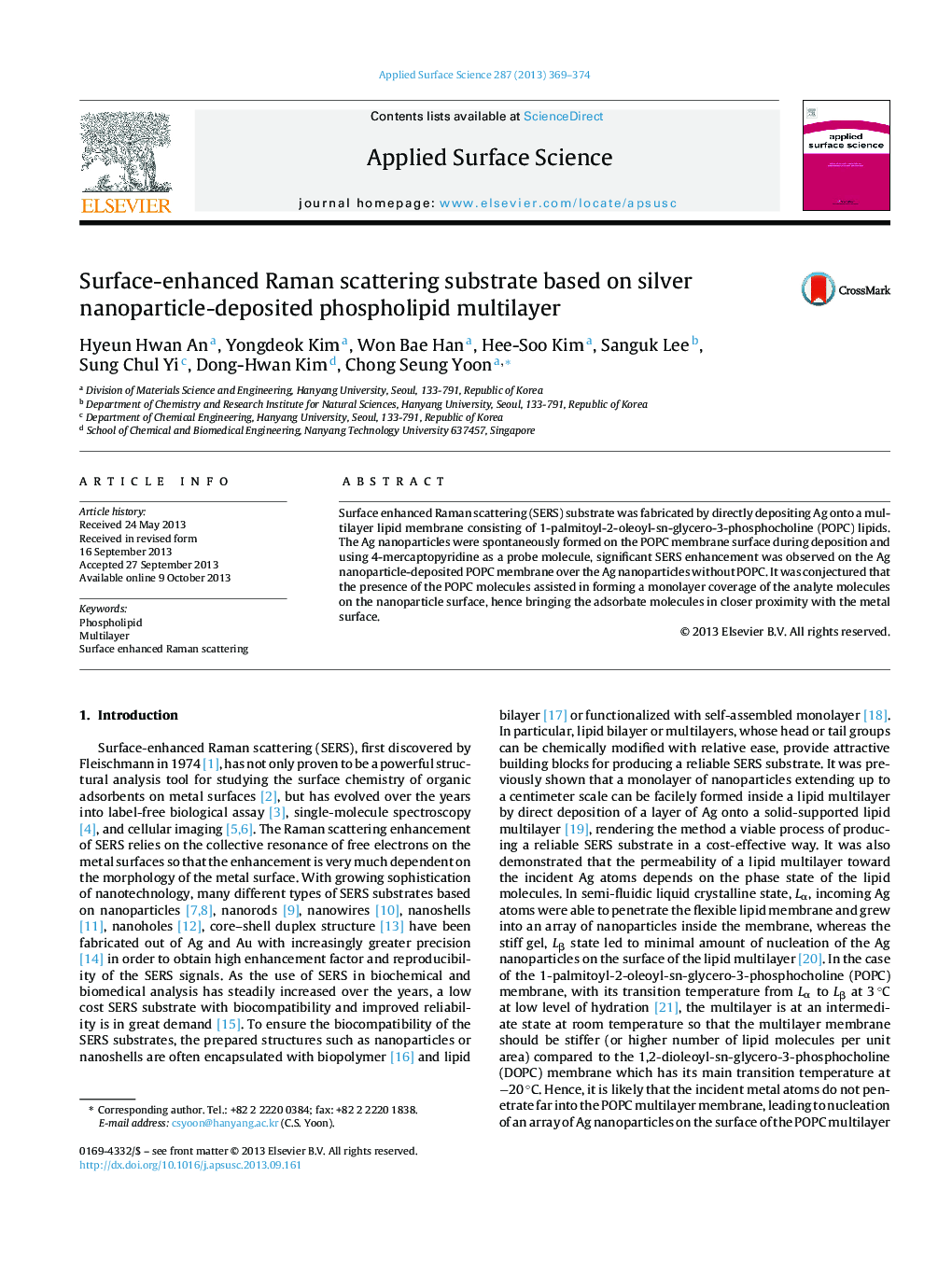| Article ID | Journal | Published Year | Pages | File Type |
|---|---|---|---|---|
| 5359403 | Applied Surface Science | 2013 | 6 Pages |
â¢SERS substrate was fabricated by directly depositing Ag onto a lipid membrane.â¢SERS enhancement from the Ag onto lipid was observed by 4MP as a probe molecule.â¢The POPC molecules assisted in forming a monolayer coverage for the analyte molecules.
Surface enhanced Raman scattering (SERS) substrate was fabricated by directly depositing Ag onto a multilayer lipid membrane consisting of 1-palmitoyl-2-oleoyl-sn-glycero-3-phosphocholine (POPC) lipids. The Ag nanoparticles were spontaneously formed on the POPC membrane surface during deposition and using 4-mercaptopyridine as a probe molecule, significant SERS enhancement was observed on the Ag nanoparticle-deposited POPC membrane over the Ag nanoparticles without POPC. It was conjectured that the presence of the POPC molecules assisted in forming a monolayer coverage of the analyte molecules on the nanoparticle surface, hence bringing the adsorbate molecules in closer proximity with the metal surface.
Graphical abstractSurface enhanced Raman scattering (SERS) substrate was fabricated by directly depositing Ag onto a multilayer lipid membrane consisting of 1-palmitoyl-2-oleoyl-sn-glycero-3-phosphocholine (POPC) lipids. The Ag nanoparticles were spontaneously formed on the POPC membrane surface during deposition and using 4-mercaptopyridine as a probe molecule, significant SERS enhancement was observed on the Ag nanoparticle-deposited POPC membrane over the Ag nanoparticles without POPC.Download full-size image
